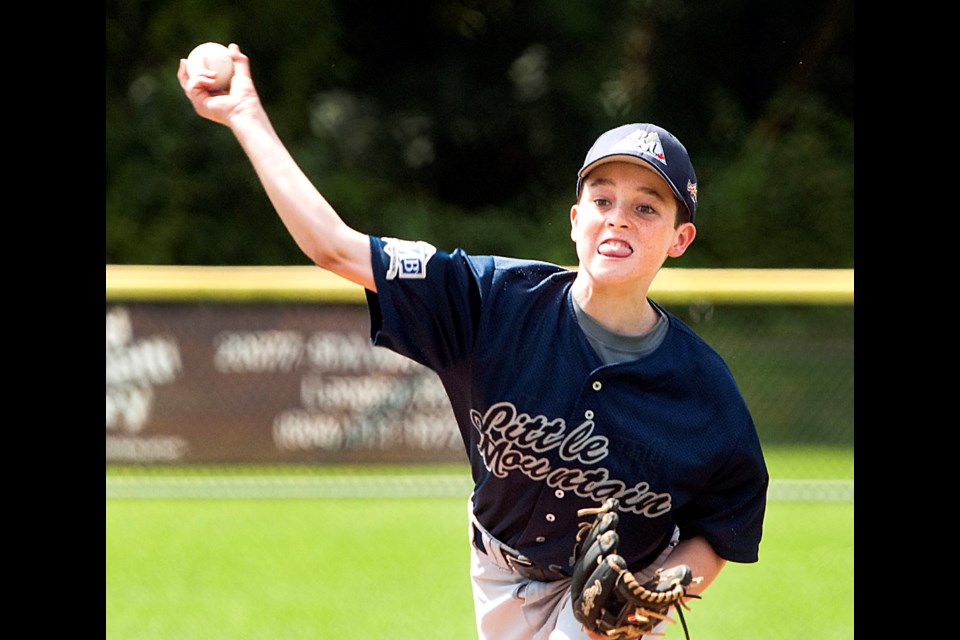In baseball, through a series and down the stretch in the playoffs, the team with the best pitching will almost always come out on top.
In Little League, it’s no different.
“The old adage is we don’t save the best pitcher for the game we’d never play,” said South Â鶹´«Ă˝Ół»Little League manager Brian Perry. Strategizing how to prolong the All-Stars’ season at the Canadian Championship this past week, Perry went with his ace, Joseph Sinclair, in the semi-final, not saving him for the championship game they wouldn’t get to without a win.
“He was our best chance,” said Perry. Sinclair pitched complete game and struck out 10. Madjik Mackenzie started in the final the next day and pitched for the championship win.
Managers like Perry plan beyond a predictable, game-to-game pitching rotation because Little League International imposes strict and enforced pitch counts. The formula is simple and designed to protect developing arms from overuse.
Eleven- and 12-year-old pitchers in the Majors division can pitch up to 20 pitches without any days’ rest. Throwing between 21 and 35 pitches requires one day rest; 36 to 50 pitches two days; 51 to 65 three days; and, more than 66 pitches means four days’ rest. Pitchers at this age are prohibited from taking more than 85 pitches in a single game. If they reach pitch 85, they are allowed to continue until the batter is retired, put out or reaches base.
Too much competitive pitching and pitching when fatigued are two reasons the American Sports Medicine Institute declared an “epidemic” among Major League Baseball pitchers because of the “rise in the number of professional pitchers requiring ulnar collateral ligament reconstruction,” more commonly known as Tommy John surgery. According , one third of active pitchers in 2013 had the surgery, named for the procedure first performed on pitcher Tommy John by surgeon Frank Jobe in 1974. Jobe, now 88, was inducted into the Baseball Hall of Fame this summer. More than 1,000 professional pitchers have extended their careers because of his work.
The link to Little League and amateur divisions like the B.C. Premier Baseball League are : “… today's pro pitcher in his 20s was an adolescent pitcher a dozen years ago.ĚýThus in many cases, the injury leading to Tommy John surgery in today's young pro pitchers actually began while they were adolescent amateurs.”
The Premier Baseball League president Ted Hotzak said, as far as he knows, no former player from his league who has played in the MLB has had the surgery, including Boston Red Sox hurler Ryan Dempster.
Other amateur and college leagues may put different pressure on pitchers, but Hotzak said players and coaches in the Premier League are motivated by bigger goals than the league’s own championship.
“These coaches pride themselves on how many kids move on to college ball or get looked at in the draft and the one thing you can’t do is overuse your pitcher in a meaningless game, which in our league they are because they’re basically innings,” he said. “You don’t want to destroy a kid’s potential arm because you threw 150 pitches in March, and for what?”
“There is a provincial championship and it means bragging rights for one year. Our coaches, their whole purpose in life is to develop guys for the next level.”



